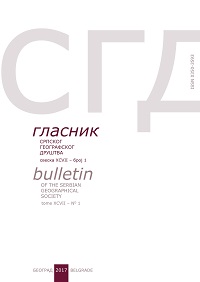Decade of the New Charter of Athens and Unsustainable 2D Visions of Cities
Decade of the New Charter of Athens and Unsustainable 2D Visions of Cities
Author(s): Velimir Lj. CerimovićSubject(s): Architecture, Human Ecology, Rural and urban sociology, Transformation Period (1990 - 2010), Present Times (2010 - today)
Published by: Српско географско друштво
Keywords: New Charter of Athens; 2D vision of cities; high, low and landscape built objects; physical city structure;
Summary/Abstract: This 2013 marks a decade of unsustainable 2D combinatorics and 3D visions of 21st century cities sublimation by the New Charter of Athens created in 2003. This is a good occasion to review some of its outdated and unsustainable 2D principles, the ones that have failed for entire decade to create better cities of tomorrow and are now far away from achieving it. The problem is seen in the fact that the New Charter of Athens, through unsustainable implementation of the outdated 2D terminology, sees the physical structure of a city in a proselytical and unsustainable way and accepts only high-built objects or artifacts, regarding them to be only built space and structures since they do possess walls. Therefore, the so-called visionary charter perceives the vision of the European cities of the 21st century, and the implementation of 2D terminology and 2D quasy-knowledge shows its unawareness of the fact that apart from social (local) communities and high-built physical structures, cities consist of two more types of physical (3D) structures, objects or artifacts having no walls. That is why its 3D vision has not been completed yet, ever since the day it was adopted in 2003, because it does not perceive and recognize low and landscape built 3D objects and artifacts. Moreover, it regards them to be the so-called non-built, the so-called free, the so-called open space. Therefore, it is certainly not unusual to note that the charter does not even mention a significant eco-reciprocity and eco-urban continuity between immanent, integrative, compatible and complementary high, low and landscape built objects or artifacts within the physical structure of cities.
Journal: Гласник Српског географског друштва
- Issue Year: 93/2013
- Issue No: 3
- Page Range: 73-104
- Page Count: 32
- Language: English

